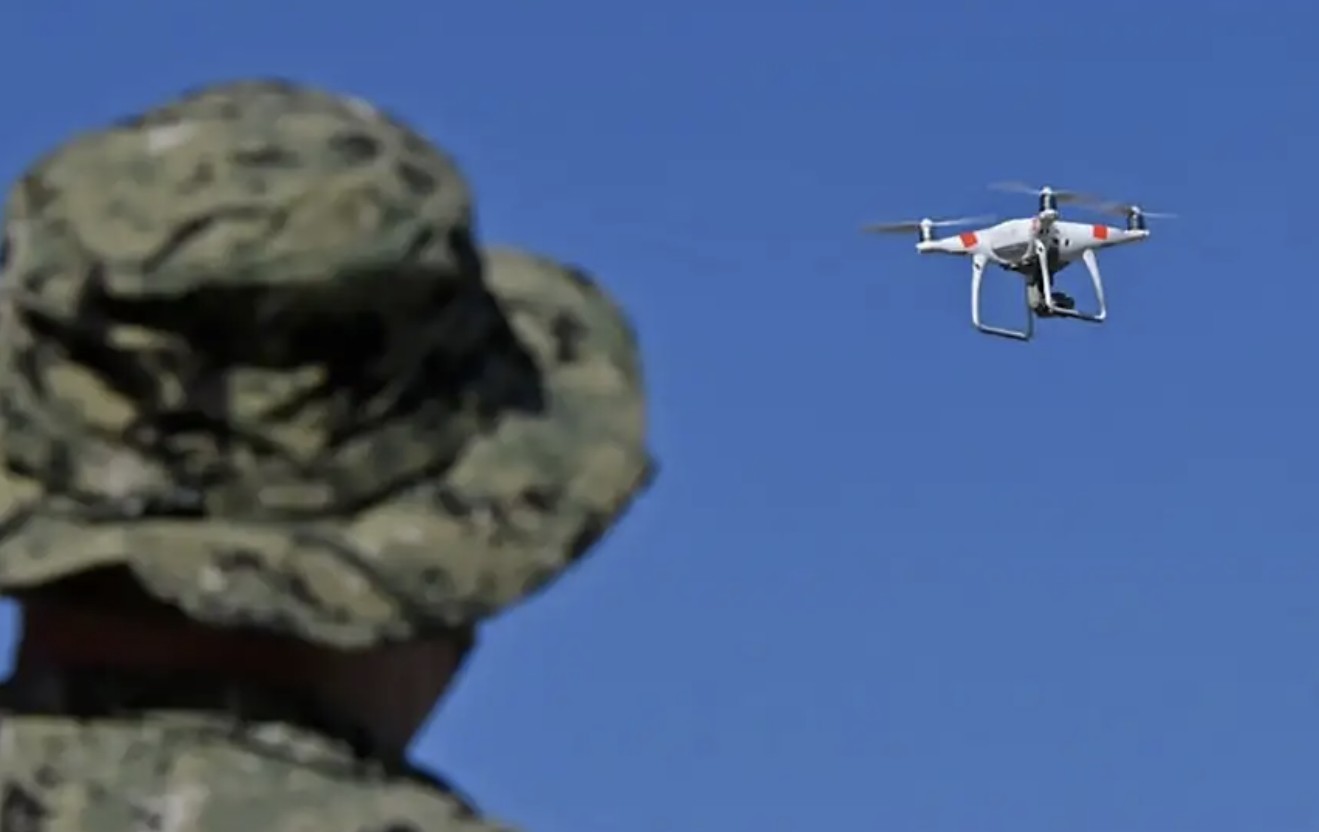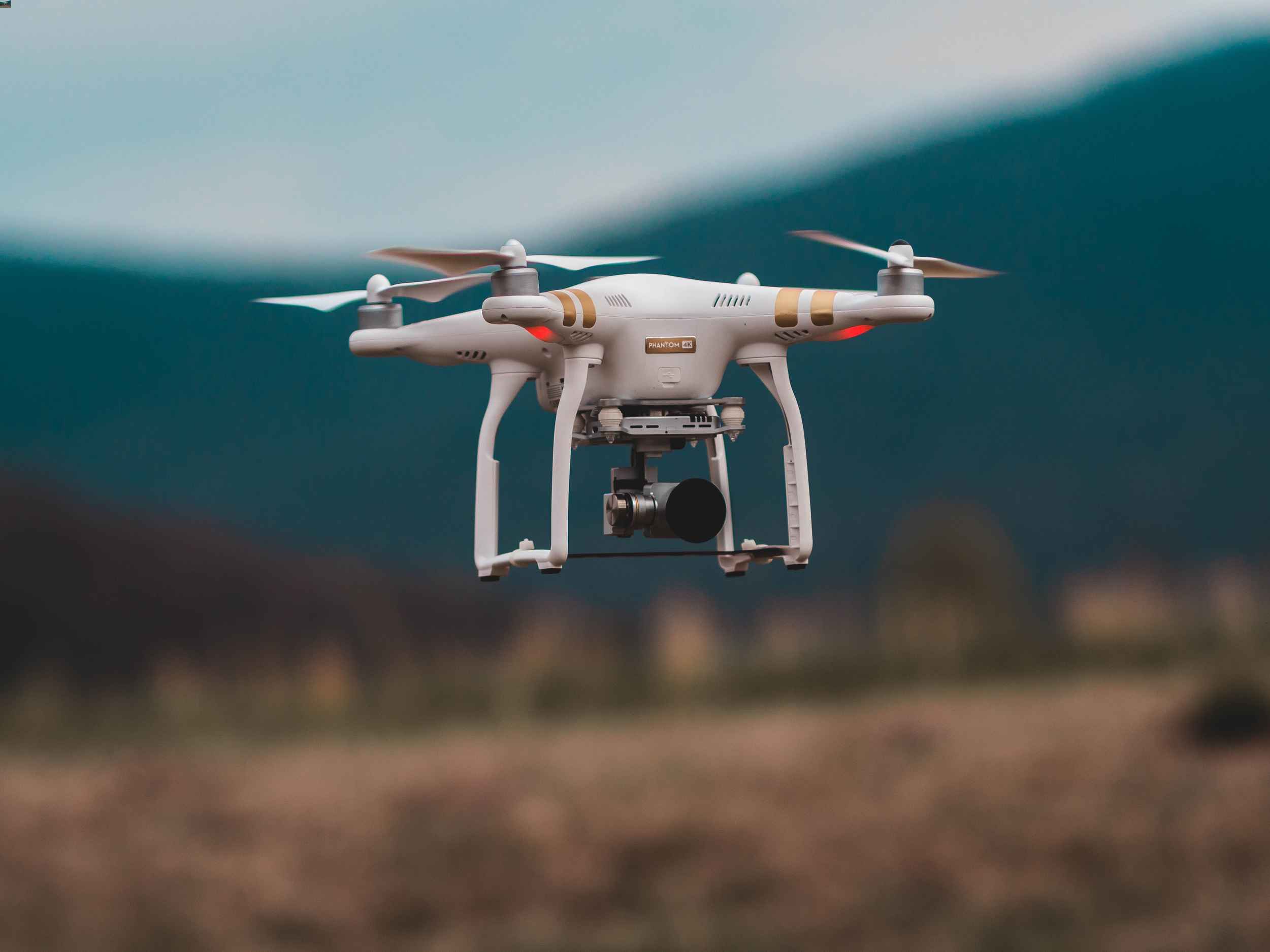Giant drones, large unmanned aerial vehicles (UAVs) with substantial payload capacities, are rapidly transforming various industries. Their size and capabilities distinguish them from smaller drones, enabling unique applications previously unattainable. This exploration delves into the technological intricacies, diverse applications, safety considerations, and future trends of this burgeoning field, providing a comprehensive overview of giant drone technology.
This analysis will examine the defining characteristics of giant drones, comparing their capabilities and limitations to smaller UAVs. We will investigate the technological challenges in their design and manufacturing, focusing on crucial components like propulsion, flight control, and communication systems. The diverse applications across sectors such as cargo delivery, infrastructure inspection, and environmental monitoring will be explored, alongside a detailed examination of safety protocols and regulatory frameworks.
Defining “Giant Drone”

The term “giant drone,” while lacking a standardized definition, generally refers to large unmanned aerial vehicles (UAVs) exceeding a certain size and payload capacity, significantly surpassing the capabilities of smaller consumer or commercial drones. These vehicles operate in a realm blurring the lines between traditional aircraft and unmanned systems, often possessing unique design considerations and operational challenges. Their size and capabilities necessitate specialized infrastructure, regulatory compliance, and operational expertise.A precise definition necessitates considering multiple factors.
Size is a key aspect, with wingspans often exceeding 20 meters and maximum takeoff weights exceeding several tons. Payload capacity is another crucial parameter, ranging from hundreds of kilograms to several tons, enabling the transport of substantial cargo or equipment. Typical applications include large-scale cargo delivery, infrastructure inspection, precision agriculture, and even limited military roles.
Classifications of Large UAVs
Large UAVs can be categorized based on several characteristics, including size, payload capacity, and intended mission. One common classification differentiates between medium-altitude long-endurance (MALE) UAVs, high-altitude long-endurance (HALE) UAVs, and very large UAVs or heavy-lift UAVs. MALE UAVs typically operate at altitudes of several thousand meters for extended durations, while HALE UAVs reach significantly higher altitudes. Heavy-lift UAVs are designed to carry exceptionally large payloads.
Another classification considers the type of propulsion system used, encompassing propeller-driven, jet-powered, and hybrid systems. The choice of classification depends on the specific application and performance requirements.
The development of giant drones necessitates advanced surveillance capabilities. Real-time monitoring of large-scale infrastructure, such as the Ambassador Bridge, benefits from high-resolution imagery provided by systems like the ambassador bridge camera. This technology, in turn, informs the design and operational parameters of future giant drone deployments, ensuring efficient and safe operation within complex environments.
Comparison of Giant Drones and Smaller UAVs
Giant drones differ substantially from smaller UAVs in several key aspects. Size and weight are the most obvious distinctions, leading to differences in operational range, payload capacity, and endurance. Smaller UAVs, often used for recreational or commercial purposes, are typically limited to short flight times and relatively small payloads. Giant drones, conversely, can remain airborne for extended periods, carrying substantial loads over significant distances.
This increased capability necessitates more complex control systems, more robust airframes, and potentially more sophisticated navigation and communication systems. Furthermore, regulatory requirements and operational procedures differ significantly between these categories, with giant drones demanding more stringent safety protocols and potentially requiring specialized pilot certifications and operating permits. The operational costs associated with giant drones are also considerably higher, reflecting the increased complexity and scale of their operations.
Smaller UAVs offer greater maneuverability and ease of deployment, but lack the endurance and payload capabilities of their larger counterparts.
Safety and Regulatory Considerations: Giant Drone

The operation of giant drones presents unique safety challenges demanding rigorous protocols and stringent regulatory frameworks. These considerations are paramount due to the increased potential for damage and injury associated with the larger size and higher weight of these unmanned aerial vehicles (UAVs). Effective risk mitigation strategies are crucial to ensure safe integration into existing airspace and minimize potential hazards.Airspace management for giant drones necessitates a layered approach.
This includes dedicated flight corridors, real-time monitoring systems, and advanced collision avoidance technologies. Furthermore, stringent pilot training and certification programs are vital to ensure operators possess the necessary skills and knowledge to handle the complexities of operating such large UAVs. Risk mitigation strategies extend beyond technological solutions and encompass comprehensive operational procedures, including pre-flight inspections, contingency planning, and robust communication systems.
Airspace Management and Collision Avoidance
Effective airspace management is crucial for preventing mid-air collisions. This involves the implementation of designated flight paths, altitude restrictions, and real-time tracking systems for giant drones. Advanced technologies, such as sense-and-avoid systems, are being developed to enhance collision avoidance capabilities. These systems utilize radar, lidar, and computer vision to detect and avoid obstacles, including other aircraft and birds.
Integration with existing air traffic control systems is also necessary to ensure seamless coordination between manned and unmanned aircraft. For example, the Federal Aviation Administration (FAA) in the United States is actively working on integrating drones into the national airspace system (NAS) through initiatives like the UAS Integration Pilot Program (IPP). This program aims to test and validate various technologies and operational procedures for safe drone integration.
Potential Safety Hazards and Mitigation Strategies
Several safety hazards are inherent in the operation of giant drones. These include mechanical failures, loss of control, adverse weather conditions, and potential for collisions. Mitigation strategies involve rigorous maintenance schedules, redundant systems, and advanced control algorithms to ensure stability and responsiveness. Weather monitoring and flight planning tools can help minimize the impact of adverse weather conditions.
The development of large-scale unmanned aerial vehicles, commonly referred to as giant drones, represents a significant advancement in aerial robotics. These systems, often employed for heavy-lift operations or large-area surveillance, are increasingly sophisticated. Further information on the capabilities and applications of these impressive machines can be found at giant drone websites dedicated to the field. Research into giant drone technology continues to push the boundaries of what is possible in terms of payload capacity and operational range.
Furthermore, the development of robust emergency procedures and recovery systems is crucial to address unforeseen circumstances. For instance, a large-scale drone failure could lead to significant property damage or even injury, thus the necessity of implementing parachute systems or other fail-safe mechanisms. Regular inspections and maintenance, including thorough checks of critical components such as motors, propellers, and batteries, are essential for preventing mechanical failures.
Safety Concerns and Countermeasures, Giant drone
The following table Artikels specific safety concerns associated with giant drone operation and the corresponding countermeasures.
| Safety Concern | Countermeasure |
|---|---|
| Mechanical failure (e.g., motor failure, propeller damage) | Regular maintenance, redundant systems, robust design, fail-safe mechanisms (e.g., parachutes) |
| Loss of control (e.g., due to GPS signal loss, software malfunction) | Redundant communication links, advanced control algorithms, autonomous return-to-home functionality, pilot training |
| Adverse weather conditions (e.g., strong winds, heavy rain) | Weather monitoring, flight planning based on weather forecasts, automated flight termination in adverse conditions |
| Collisions with other aircraft, birds, or obstacles | Sense-and-avoid systems, airspace management, dedicated flight corridors, real-time tracking |
| Payload malfunction or release | Secure payload attachment mechanisms, robust payload design, emergency payload release mechanisms |
| Cybersecurity vulnerabilities | Secure communication protocols, encryption, regular software updates, intrusion detection systems |
Future Trends in Giant Drone Technology
Giant drone technology is poised for significant advancements in the next 5-10 years, driven by innovations in several key areas. These improvements will expand the operational capabilities and applications of these large unmanned aerial vehicles (UAVs), impacting various sectors significantly. The convergence of improved battery technology, enhanced autonomous navigation systems, and increased payload capacity will redefine the potential of giant drones.
Advancements in Battery Technology
The current limitation of many large drone operations is battery life. Advancements in battery technology, such as solid-state batteries and improved lithium-sulfur batteries, are expected to significantly increase flight times. Solid-state batteries offer higher energy density and improved safety compared to lithium-ion batteries, promising longer endurance and reduced risk. Research into high-energy-density fuel cells, though still in early stages for large-scale drone applications, also presents a pathway to dramatically extend flight times, potentially enabling transcontinental flights for certain drone designs.
This increased flight time will enable the expansion of giant drone applications to missions requiring longer durations, such as long-range cargo delivery or extended environmental monitoring.
Improvements in Autonomous Navigation
Autonomous navigation is crucial for the safe and efficient operation of giant drones, especially in complex environments. Future developments will focus on enhancing the robustness and reliability of autonomous systems. The integration of advanced sensor technologies, including lidar, radar, and computer vision, will enable more precise positioning and obstacle avoidance. Furthermore, the development of sophisticated AI-powered algorithms for path planning and decision-making will allow giant drones to navigate dynamically changing environments, including unpredictable weather conditions and unexpected obstacles.
The integration of satellite-based navigation systems, such as GPS and Galileo, coupled with inertial measurement units (IMUs) and other sensors, will provide redundant navigation capabilities, increasing safety and reliability. This level of autonomy will facilitate the use of giant drones in various applications without constant human intervention.
Increased Payload Capacity
Increased payload capacity is a key driver for the expanding applications of giant drones. Advancements in lightweight yet high-strength materials, such as carbon fiber composites and advanced polymers, will allow for the construction of larger and more robust airframes capable of carrying heavier payloads. This increased payload capacity will enable giant drones to transport larger quantities of cargo, conduct more extensive surveying operations, or deploy heavier equipment for infrastructure inspection or emergency response.
For example, the current maximum payload capacity of many large drones is around 1 ton. Future designs could easily double or even triple this capacity, leading to more efficient and cost-effective transportation of goods, particularly in remote or difficult-to-access areas.
Potential Impact on Various Sectors
The advancements in giant drone technology will have a profound impact on several sectors in the next 5-10 years. In logistics and transportation, giant drones will offer a faster, more efficient, and potentially cheaper alternative for delivering goods to remote areas or congested urban centers. In infrastructure inspection, giant drones equipped with high-resolution cameras and sensors can provide detailed inspections of bridges, pipelines, and power lines, reducing the need for costly and time-consuming manual inspections.
In agriculture, giant drones can be used for precision spraying of crops, aerial monitoring of crop health, and efficient seeding or fertilization. In environmental monitoring, giant drones can be deployed for tasks such as wildfire detection, monitoring deforestation, and assessing environmental damage. Furthermore, the potential for search and rescue operations using giant drones with enhanced payload capacity for carrying personnel or equipment is considerable.
Hypothetical Future Giant Drone Design
Imagine a giant drone, approximately the size of a small helicopter, with a wingspan of 25 meters and a maximum payload capacity of 5 tons. The airframe is constructed from lightweight, high-strength carbon fiber composites, providing both structural integrity and fuel efficiency. The drone is powered by a hybrid propulsion system combining high-energy-density solid-state batteries and hydrogen fuel cells, providing an endurance of over 24 hours.
Its autonomous navigation system integrates lidar, radar, and advanced computer vision algorithms for precise obstacle avoidance and path planning, allowing for safe operation in complex environments. Multiple high-resolution cameras and sensors are integrated for data acquisition, while a modular payload bay allows for easy swapping of different payloads depending on the mission requirements. This design incorporates advanced redundancy systems, including multiple propulsion units and navigation systems, to ensure safe and reliable operation.
The drone’s control system is highly automated, capable of autonomous flight and mission execution, with human oversight only required for complex decision-making or emergency situations. This design reflects the anticipated advancements in materials science, battery technology, and autonomous navigation systems.
Array
The widespread adoption of giant drones presents a complex interplay of economic and societal consequences. Their potential to revolutionize various sectors is undeniable, but careful consideration of both benefits and drawbacks is crucial for responsible integration into society. This analysis examines the economic implications, including job displacement and creation, and explores the broader societal effects, encompassing both positive and negative impacts.
A comparison with traditional methods highlights the relative advantages and disadvantages of utilizing giant drones.
The economic implications of giant drone technology are multifaceted. While certain sectors may experience job displacement due to automation, new opportunities will emerge in areas such as drone manufacturing, maintenance, operation, and data analysis. For example, the logistics industry could see a significant shift, with giant drones potentially replacing traditional trucking for long-distance cargo transport, leading to reduced fuel costs and faster delivery times.
However, this transition could result in job losses for truck drivers and related support staff. The agricultural sector presents another example; giant drones equipped with precision spraying systems could significantly reduce pesticide use and improve crop yields, benefiting farmers but potentially displacing agricultural workers currently involved in manual spraying.
Job Creation and Displacement in Specific Sectors
The introduction of giant drones will likely lead to a net change in employment across various sectors. While some jobs will be lost due to automation, new job categories will emerge requiring specialized skills in drone operation, maintenance, software development, and data analysis. The logistics industry, for instance, might experience a decrease in traditional trucking jobs but a simultaneous increase in demand for drone pilots, maintenance technicians, and data analysts responsible for managing drone fleets and optimizing delivery routes.
Similarly, the agricultural sector could see a reduction in manual labor jobs related to crop spraying but an increase in the demand for agricultural engineers and technicians specializing in drone technology. The exact net impact on employment will depend on the rate of adoption, the extent of automation, and the availability of retraining programs for displaced workers. Quantitative analysis based on specific industry projections is needed to provide precise estimates of job creation and displacement.
For instance, a study comparing the projected job losses in trucking versus the projected job gains in drone-related industries could offer a more accurate assessment.
Societal Impacts of Widespread Giant Drone Adoption
The societal impacts of giant drones are far-reaching and encompass various aspects of daily life. Positive impacts could include improved infrastructure inspection, faster emergency response times, and more efficient delivery of goods and services. For example, giant drones could be used to inspect bridges and power lines, reducing the need for risky and time-consuming manual inspections. They could also deliver essential medical supplies to remote areas, significantly improving healthcare access.
However, potential negative consequences include privacy concerns, increased noise pollution, and potential risks to air safety. Regulations will be crucial in mitigating these risks and ensuring responsible use. For instance, strict guidelines on flight paths, data security, and noise level limitations will be needed to balance the benefits with potential societal drawbacks. Furthermore, robust public discourse and education initiatives will be necessary to address concerns and promote responsible adoption of the technology.
Economic Comparison: Giant Drones vs. Traditional Methods
A cost-benefit analysis comparing giant drones with traditional methods for similar tasks reveals both advantages and disadvantages. While initial investment in giant drone technology can be substantial, long-term operational costs may be lower in some applications, such as long-distance cargo transport or large-scale infrastructure inspection. For example, using giant drones for cargo delivery could reduce fuel costs and labor expenses compared to traditional trucking, especially for long distances.
However, the initial investment in purchasing and maintaining the drones, as well as the need for specialized infrastructure (e.g., drone landing zones), should be considered. Furthermore, the efficiency gains from using giant drones might be offset by factors like weather conditions and regulatory limitations. A comprehensive economic model considering all relevant factors, including initial investment, operational costs, maintenance, and potential revenue gains, is necessary for a thorough comparison.
Case studies comparing the costs and benefits of using giant drones versus traditional methods in specific industries (e.g., comparing drone-based infrastructure inspection to traditional methods in a specific region) could provide valuable insights.
Giant drones represent a significant advancement in unmanned aerial vehicle technology, offering transformative potential across numerous sectors. While challenges remain in areas such as regulation, safety, and technological refinement, the ongoing development and deployment of these large-scale UAVs promise to revolutionize industries ranging from logistics and infrastructure management to environmental monitoring and scientific research. Continued innovation in areas like autonomous navigation, battery technology, and payload capacity will further expand their capabilities and applications in the years to come.
Helpful Answers
What is the maximum flight time for a giant drone?
Flight time varies significantly depending on drone model, payload, and environmental conditions. Current models range from several hours to over a day in ideal circumstances.
What are the primary limitations of giant drone technology?
Limitations include high initial costs, complex regulatory hurdles, battery technology constraints affecting flight time and range, and susceptibility to adverse weather conditions.
How are giant drones powered?
Giant drones typically utilize large-capacity batteries or, in some cases, hybrid systems combining batteries with internal combustion engines for extended flight times.
What are the environmental impacts of giant drone operations?
Environmental concerns include potential noise pollution, battery disposal challenges, and the carbon footprint associated with manufacturing and operation.